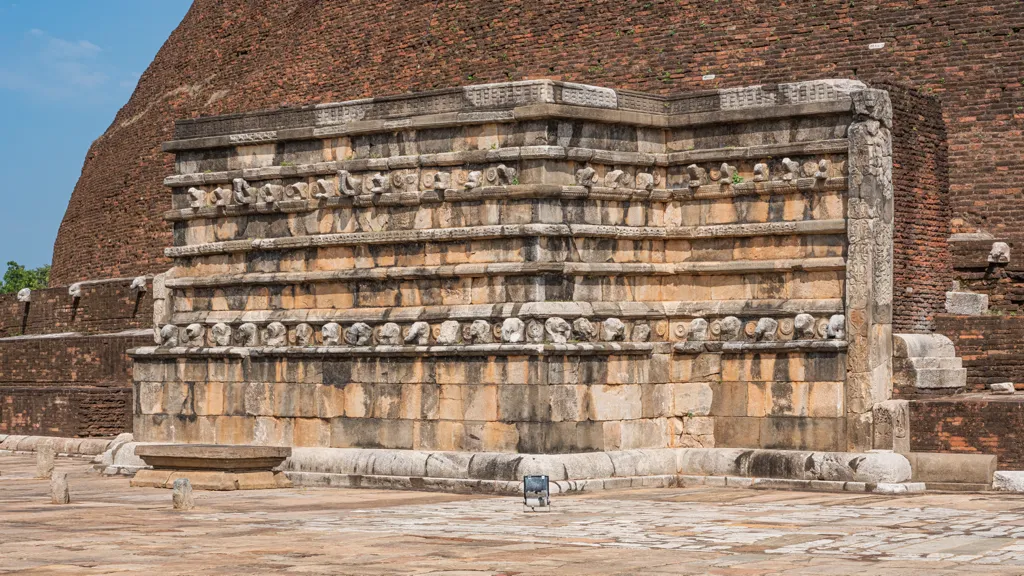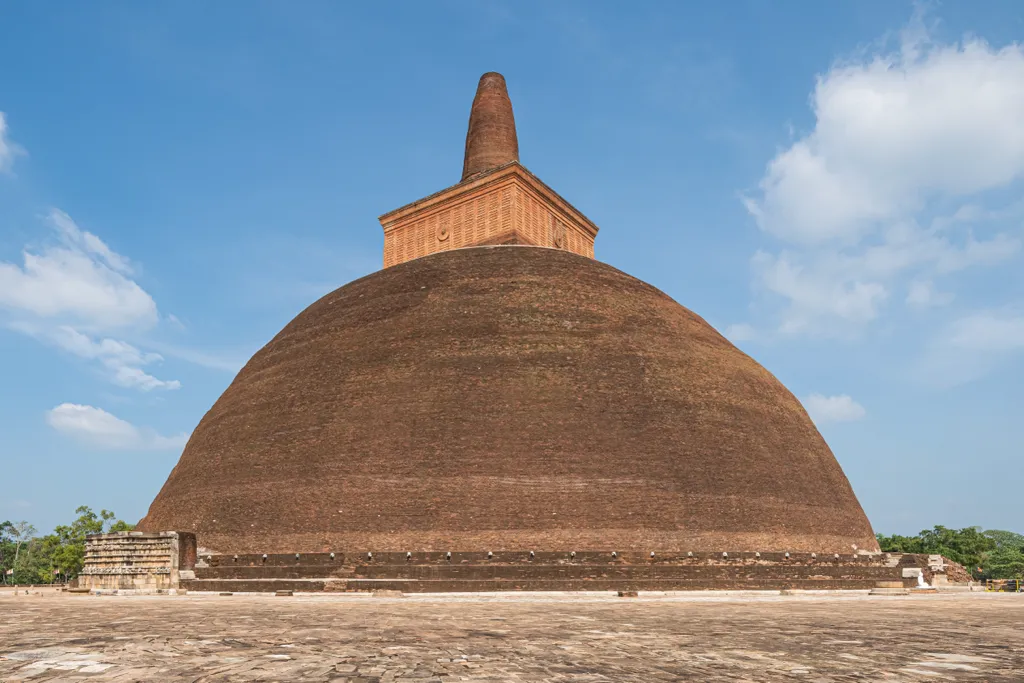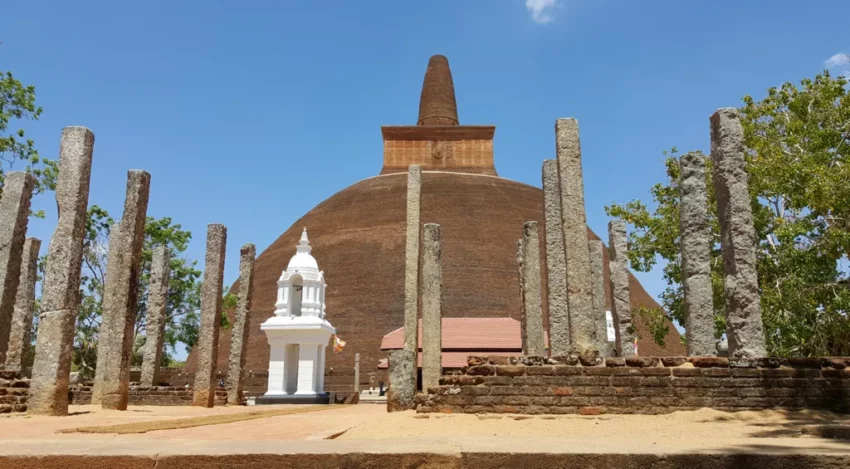Historical Overview of Abhayagiri Vihāra
Abhayagiri Vihāra, located in Anuradhapura, Sri Lanka, stands as a monumental site in the annals of Buddhist history, showcasing a blend of Theravada, Mahayana, and Vajrayana Buddhist traditions. Founded in the 2nd century BC, this site evolved into a significant religious, educational, and cultural hub by the 1st century AD.
Get your dose of History via Email
Establishment and Expansion
The inception of Abhayagiri Vihāra is tied to the reign of King Valagamba (Vattagamani Abhaya) around 89-77 BC. During a tumultuous period marked by internal strife and external invasions, King Valagamba vowed to construct a monastery if he regained his throne. Following his successful return to power, he established the Vihāra on the site of a former Jain monastery, symbolizing both a religious and a national resurgence. This site later became a key center for Buddhist scholarship and housed the sacred Tooth Relic of the Buddha.
Architectural and Cultural Flourishing
Under royal patronage, particularly from King Gajabahu I in the 2nd century AD and King Mahasena in the 3rd century AD, Abhayagiri Vihāra saw significant architectural enhancements and religious growth. The period marked by King Mahasena’s rule is often considered the golden age of Abhayagiri, during which the monastery complex was expanded and enriched, becoming a pivotal repository for Mahayana and Vajrayana Buddhist texts and teachings.

Educational and International Influence
Abhayagiri Vihāra was not only a religious center but also a vibrant educational institution. It attracted scholars from various parts of the world, establishing itself as a place of great learning and intellectual exchange. The Vihāra had established relations with Buddhist communities as far as China, Java, and Kashmir, evident from historical records and pilgrim accounts, such as those of the Chinese monks Faxian in the 5th century and Xuanzang in the 7th century.
Mahāyāna and Vajrayāna Practices
The Vihāra was known for its inclusive approach to Buddhist practice, incorporating both Mahāyāna and Vajrayāna traditions. This inclusivity, however, was viewed with skepticism by the more conservative Theravada monks at the Mahavihara, leading to religious and philosophical disputes.
Decline and Suppression
The prominence of Abhayagiri Vihāra waned with the political ascendancy of the Mahavihara sect, especially during the reign of King Parakkamabāhu I in the 12th century AD. The king enforced a unification of the Buddhist monastic orders, leading to the absorption of Abhayagiri’s monks into the Mahavihara tradition and the eventual dissolution of the distinct Abhayagiri practices.

Archaeological Rediscovery and Restoration
After centuries of neglect and disrepair, the site of Abhayagiri Vihāra was rediscovered in the 19th century, leading to extensive archaeological studies and restoration efforts. These efforts culminated in the comprehensive restoration of the Abhayagiri Stupa, completed in 2015, which once again highlighted the site’s historical and cultural significance.
Conclusion
Abhayagiri Vihāra’s history reflects the dynamic interplay of religious, cultural, and political forces in ancient Sri Lanka. From its inception as a symbol of national resurgence to its role as a major center of Buddhist learning and practice, Abhayagiri Vihāra offers profound insights into the complex tapestry of Sri Lankan and Buddhist history. Its legacy continues to be a subject of scholarly study and religious veneration, embodying a rich heritage that transcends the boundaries of time.
Sources:

